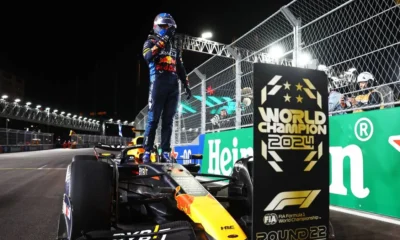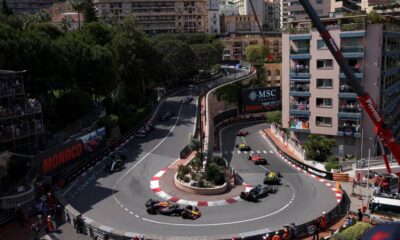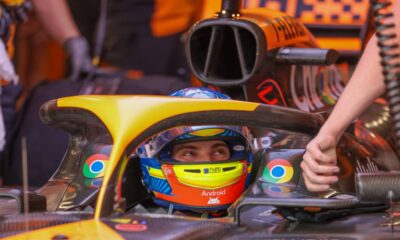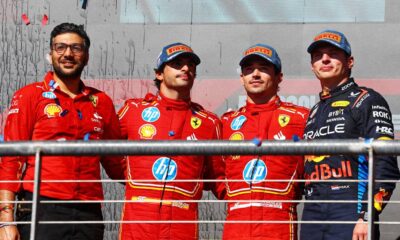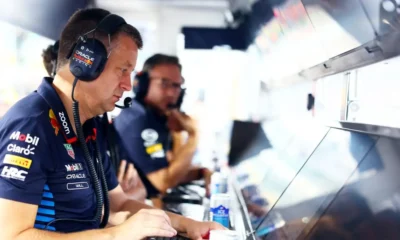Motorsport
These races made F1 history. 5+1 Belgian Grand Prix that every die-hard fan should know about
The Belgian track in Spa is celebrating its centenary on the grand prix scene this year. That’s long enough for the Belgian Grand Prix to prove its status as one of the most important events in Formula 1 history. The circuit in the Ardennes forests has witnessed many a grand prix that has moved the sport forward. Whether we are talking about safety in F1 or the highlights of individual drivers, teams or Formula 1 itself.
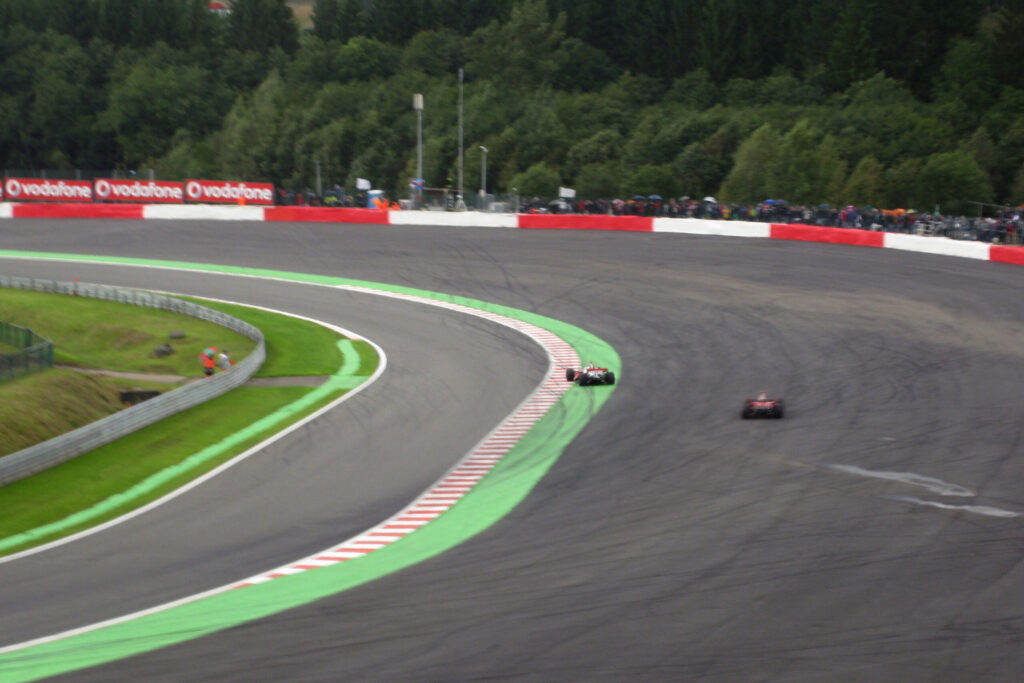
The Belgian track in Spa is celebrating its centenary on the grand prix scene this year. That’s long enough for the Belgian Grand Prix to prove its status as one of the most important events in Formula 1 history. The circuit in the Ardennes forests has witnessed many a grand prix that has moved the sport forward. Whether we are talking about safety in F1 or the highlights of individual drivers, teams or Formula 1 itself.
This is not necessarily a list of the best or most dramatic Belgian grand prix. But it is an overview of the races from Spa-Francorchamps that have made the history of the sport we love with their stories.
Belgian Grand Prix 1960. Next to San Marino 1994, the most tragic race in F1 history
Today’s queen of motorsport races are usually around an hour and a half long. And we still occasionally discuss whether modern grand prix are too long. Well, imagine that the 1958 Belgian Grand Prix went down in the history books as controversial for the reason that it lasted a mere one hour and 37 minutes.
But we have to admit that races back then were always at least a two-hour affair. Often the big prizes lasted over three hours and nobody complained. But no one can cast aspersions on the mood of the original version of the Spa circuit. The long straights, blind sections and especially the fast corners gradually seemed to get faster thanks to the increasingly nimble and lighter cars.
In 1959, the Spa race did not take place due to finances. The organisers managed to find the money to stage a grand prix for the coming season. However, they were also careful not to repeat 1958, so they extended the length of the Grand Prix from 330 to 508 kilometres.
However, before discussions could begin as to whether this was the right move, Stirling Moss and Mike Taylor (both on Lotus) suffered serious injuries in the fast and tight corners of the 14km circuit. Fortunately, the rest of the practice sessions were without further critical moments.
Unfortunately, Moss and Taylor’s accidents foreshadowed something far worse. The extended twelve-lap race offered more opportunities for more such crashes. On lap 20, Chris Bristow crashed in the same corner as Moss had earlier. Bristow was thrown from the car and immediately succumbed to his injuries.
To make matters worse, just five laps later Alan Stacey collided with a bird. His car went to the outside of the corner just a few hundred yards from where Bristow had crashed and caught fire after hitting the valley. Stacey burned to death in his car.
The race (understandably for the time) was not abandoned after these tragedies. The winner was Jack Brabham (pictured below) in the Cooper. The 1960 Belgian Grand Prix is thus the only event where two drivers died in the race itself.
1966 Belgian Grand Prix. Half the grid eliminated due to rain and fog after the first lap
Spectators sitting in the grandstands on the main straight must have had their chins dropped as they entered the second lap of the race. Only seven of the sixteen starters survived the first lap at the extremely wet, fog-covered Spa-Francorchamps.
A total of four cars crashed in the same corner. The worst off was Jackie Stewart, whose car could not handle the finished rivers of water and crashed into a telephone pole, inches from the track itself. It subsequently landed upside down in the ditch.
Stewart remained wedged in the cockpit for 25 minutes, which was half filled with fuel that could have caught fire at any time. Compatriot Graham Hill and American Bob Bondurant rushed to the aid of the injured Englishman. Stewart began his legendary quest for greater safety in Formula One after this crash.
The triumph went to John Surtees (pictured below). For the record, and to give you an idea of how much water there was that day, reigning World Champion Jim Clark’s engine took on so much water during the first lap that it knocked him out of the race.
Belgian Grand Prix 1998. The more than famous first lap mass casualty
The greatest classics in F1 history are usually remembered by just one moment in the race, but in context it may have been the most memorable. One can single out the 1989 Japanese GP, for example, where, frankly, nothing happened other than two title contenders Alain Prost and Ayrton Senna colliding.
The 1988 Belgian Grand Prix, however, is not one of these cases. Certainly, many will recall this grand prix as the one in which the most massive accident in the entire history of the sport took place. However, the events that followed are just as important not to undeservedly sink into the minds of fans just because of that spectacular crash.
Team Jordan was not one of the stables fighting for wins or even podiums in 1998. Damon Hill may have surprised with a third place qualifying finish, but no one expected the yellow cars to even be in contention for the top positions.
However, everything went their way in that race. Namely, Mika Häkkinen’s skid just after the restart and the collision between Michael Schumacher and David Coulthard (two potential title contenders, both pictured below) took out all of the Jordan drivers’ rivals.
Hill and his teammate Ralf Schumacher were going for one of the most shocking triumphs of all time. In the closing laps, Ralf was instructed by the team not to try to pass Hill. The 1996 world champion went on to claim his last career victory.
We’ll end this section of the article with some bonus information. A post-start mass collision has prompted the International Automobile Federation to introduce a new rule that all race starts affected by excessively heavy rain must take place behind the safety car.
2004 Belgian Grand Prix: Räikkonen’s beauty ride or Schumacher seven times world champion
If you’re a Michael Schumacher fan and have been following F1 for a while, you’ll remember the 2004 Belgian Grand Prix. The German won his seventh world championship there. And on the face of it, second place, given the course of the season so far, might suggest that not much has happened. Only this time he let someone else win out of pity for “Schumi”. But the opposite is true, and Schumacher had his work cut out for him to finish in second place at all.
Trulli in the Renault scored his only career pole position in qualifying. Behind him, Schumacher, Alonso and Coulthard were on the grid. Kimi Räikkonen, the late race winner, was up to tenth. After the lights went out, Trulli retained the lead, while Schumacher dropped behind Alonso and Coulthard.
Behind them, the field was crashing for a hundred and six. Four drivers failed to complete the first lap, so the safety car had to take to the track. After that, Schumacher was passed by a rocketing Räikkonen and his McLaren teammate Montoya.
Alonso took over the lead after Trulli’s pit stop, but he didn’t last long in the top spot, getting two clocks on the oil. Räikkonen enjoyed a one-lap lead before turning to the mechanics. Schumacher battled with Montoya, who he beat through the pit stops. Trulli was losing pace, and the live-watered Schumacher took advantage.
Still, Schumacher had little hope of a satisfactory position at the end of the race. Jenson Button’s tyre explosion at around 330km/h called the safety car back on track. Schumacher took the opportunity to get fresh tyres and some fuel in the tank. He lined up behind Räikkonen, but was unable to overtake him (both pictured below at the time of the second safety car).
The Finn went on to take the triumph, but the star of the grand prix was unsurprisingly Schumacher. The 2004 Belgian Grand Prix is a very special race for all Schumi fans.
The 2008 Belgian Grand Prix. The most chaotic end to a Grand Prix ever
Rain and racing at Spa is always a treat. (Well, almost… After the experience of last year’s Belgian Grand Prix, many prefer a dry race for this year.) Especially when, thanks to the length of the Spa circuit, one part can be dry and the opposite part can have ropes of water falling down. This was experienced by everyone who took part in the 2008 Belgian Grand Prix.
The two rivals for the 2008 championship trophy, Lewis Hamilton and Felipe Massa, lined up on the front row. The morning rain made it difficult for several drivers to exit the grid, including Massa, who dropped behind his teammate Räikkonen. Hamilton, though he held on to the lead, caught a skid on the second lap and left the top spot to Räikkonen.
The race was relatively settled. However, Hamilton began to catch leader Räikkonen after the second lap of pit stops. It was shaping up to be a grand finish. Especially as Räikkonen would do everything he could to keep Hamilton behind him with a view to helping Massa in the championship. The Finn still had a shot at the title, but he was pulling out all the stops.
Amazingly, the south-western part of the circuit (dominated by the second and third sectors of the track) began to rain heavily with three laps to go, while on the other side the conditions were still dry. Räikkonen slowed, but Hamilton took a bold gamble and closed in on the Finn, who he then chased into the chicane.
Hamilton tried to pass Räikkonen, but he left him no room and Hamilton had to cut the chicane short. Immediately afterwards, the Briton laid into the inside of the first corner of La Source and got past Räikkonen. On the penultimate lap, the rain spread to almost the entire area above the track. The duo of leaders went into the breakaway zone at the Pouhon double-turn (see main image of article). Raikkönen miraculously passed between Hamilton and a lap down Nico Rosberg on the Williams a few seconds later. He subsequently got the clock on the water and handed the top spot to Hamilton.
Räikkonen crashed out on the same lap, and Hamilton, on dry tyres in the pouring rain, drove to one of his greatest F1 triumphs. However, the Briton was handed a 25-second penalty for shortening the chicane. That left Massa with the victory at Spa.
Bonus: 2010 Belgian Grand Prix. Probably one of the least appreciated races in history
In the last few years, the races at Spa have not exactly been among the most dramatic of any given season. One of several reasons for this could be the increasingly heavier and bigger cars or the many years of Mercedes dominance.
Still, we don’t have to go too far back in time to find a Belgian grand prix that for some reason isn’t talked about much these days. We’re talking about the 2010 Belgian race, which, while it featured close points differentials between the top five drivers, the race itself wasn’t brimming with much drama. Except for the 2010 Belgian Grand Prix.
Red Bull driver Mark Webber took pole position. A bad start relegated him to sixth. Hamilton (pictured below) took the lead. However, the rain made its presence felt during the first lap and hit the track from the west. A number of cars, including the leading Hamilton, went into the escape zone at the chicane due to the unexpected shower.
The rain intermezzo was short-lived, with blue skies even appearing amongst the clouds on lap three. On lap 16, the rain mysteriously decided to return to the Spa circuit. On the same lap, there was a collision between Sebastian Vettel in the red bull and Jenson Button in the mclaren. Vettel had to pit for a new front wing, while Button’s race was over. On top of that, Vettel received a pit lane penalty which knocked him out of the top ten in points.
A full battle was taking place mid-race when it started to rain for the third time. It was lap 34. This time the rain was so heavy that the drivers stayed on track for the time being, but the tarmac lost grip in some places. This caught a lot of drivers out, with race leader Hamilton even running into a duck, but luckily he returned to the track without any major damage.
Chaos ensued immediately afterwards. Kubica failed to get into his pit stall, Alonso got a skid and hit the barrier, ending his race prematurely. Despite the visit to the gravel, Hamilton triumphed in a breathtaking race ahead of Webber and Kubica.
So let’s hope the new technical regulations work and that this year’s Belgian Grand Prix will go down as one of the most memorable in history. And if this is the last race at Spa, let’s make it rightfully worthwhile.
Source: Motorsport Magazine, F1

